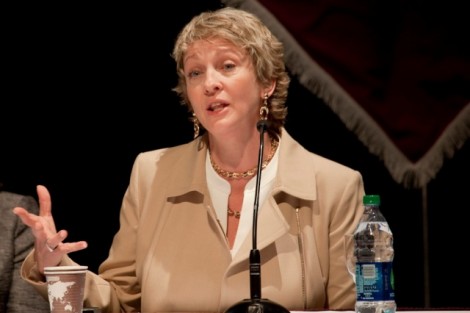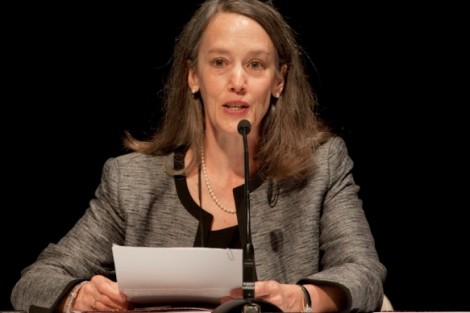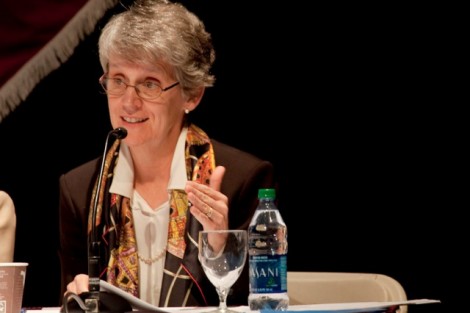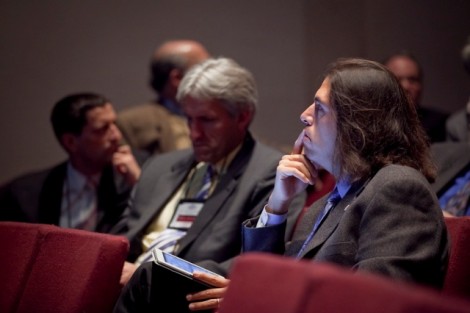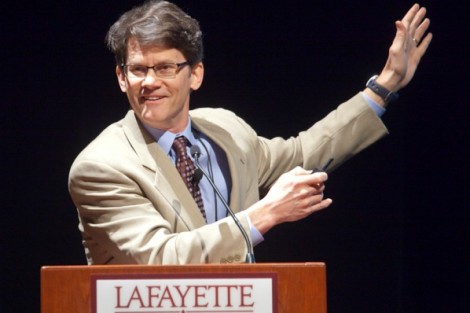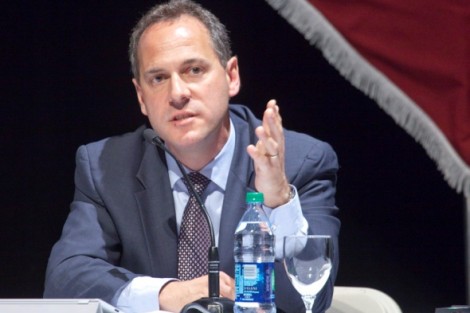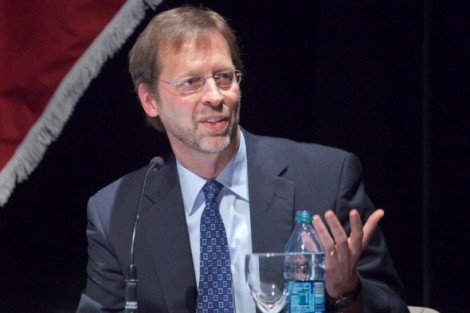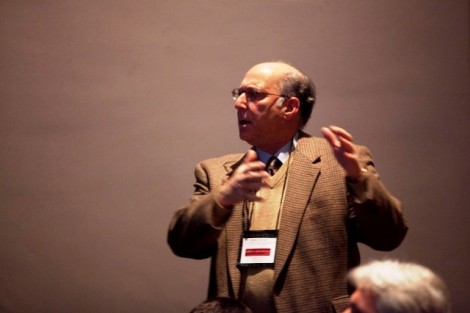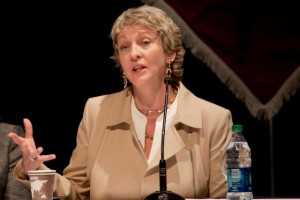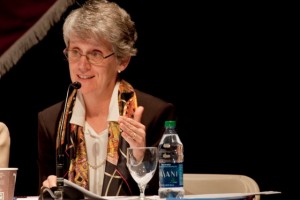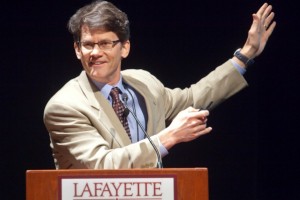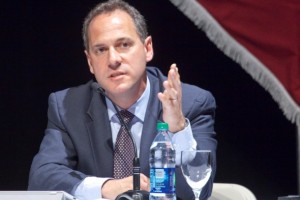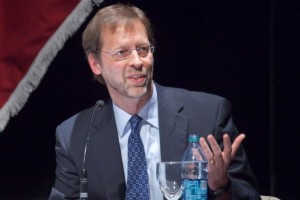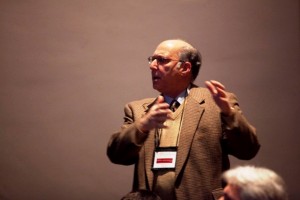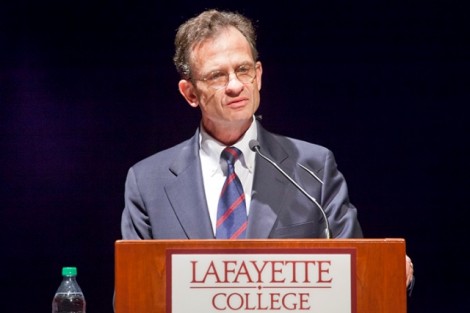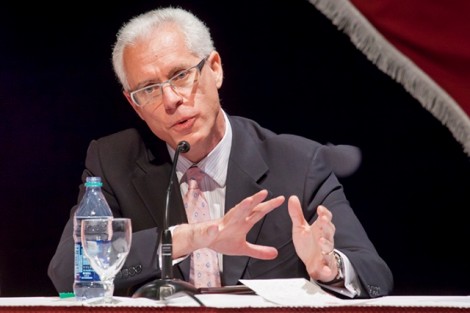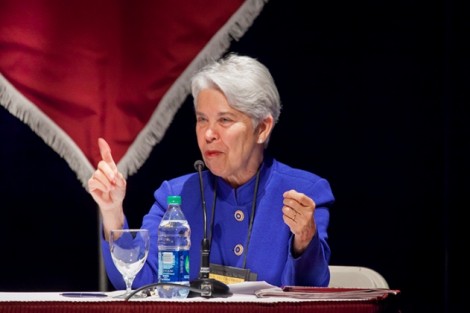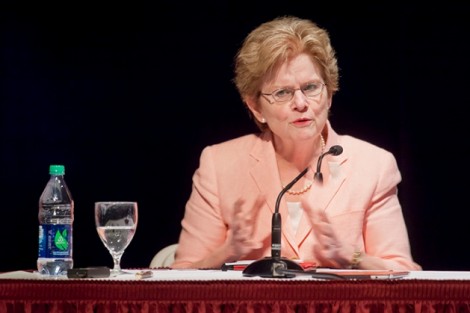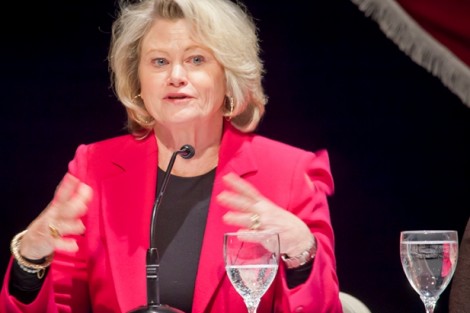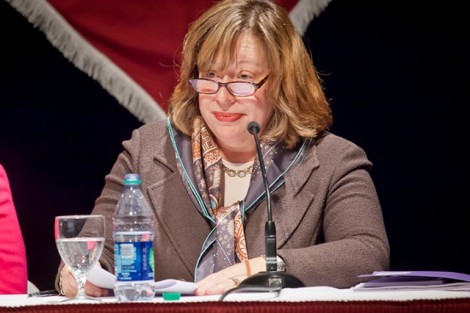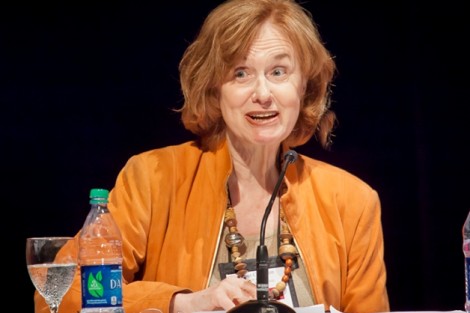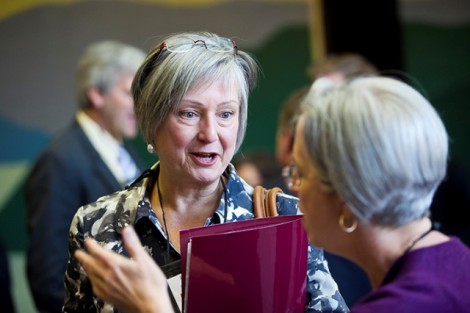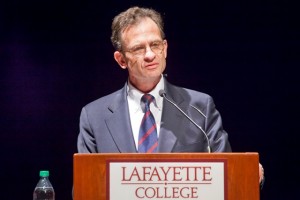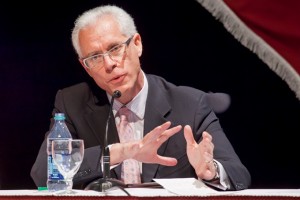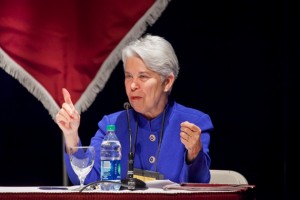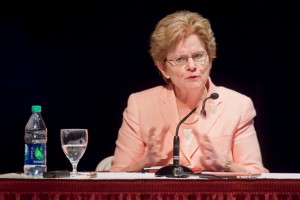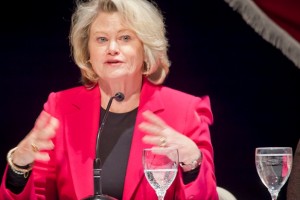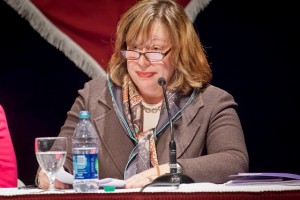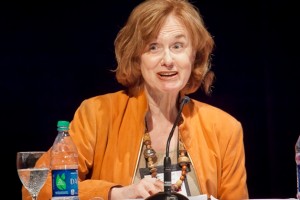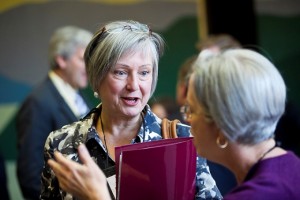The second day of Lafayette’s national conference on “The Future of the Liberal Arts College in America and its Leadership Role in Education around the World” included thoughtful and candid discussions on many of the issues facing higher education today.
Consultants and presidents from firms and colleges across the country presented talks focusing on four themes: affordability, technology, changing boundaries, and governance. Abstracts and photo galleries from today’s talks are provided below.
William G. Bowen, president emeritus of The Andrew W. Mellon Foundation and Princeton University, presented the conference’s keynote address, “More to Hope Than to Fear: The Future of the Liberal Arts College.” A video and photo gallery of his talk will be included in tomorrow’s coverage of the final day of the conference.
Read articles about the conference in The Chronicle of Higher Education and Inside Higher Ed
Watch videos, view a photo gallery, and read about the opening night talks
Visit the conference website
Morning Session
Economics and Affordability
Affordability and Access in American Higher Education
Catharine Bond Hill, president, Vassar College
A common refrain regarding higher education in America is that the economic model is broken or unsustainable. There are real challenges facing higher education, and a clear discussion of these issues is needed to advance productive policy responses. Part of the concern about higher education is that there is increased demand at the same time that public financial support is decreasing, shifting costs to families. Developments in the labor market are pushing up demand, while the price of both public and private nonprofit higher education is rising. At the same time that price is going up, in some cases quality is going down, also as a result of reduced public support. This paper will explore possible policy responses, discuss implications for liberal arts colleges, and examine ways to maintain access and affordability in this challenging economic environment.
Higher Education’s Economic Model: Is it Sustainable?
Jill Tiefenthaler, president, Colorado College
The cost of higher education is a topic that has received much attention at a time when tuition is increasing and household income is falling, yet a college education is more important than ever to an individual’s economic security. Given this confluence of factors, those who work in higher education will continue to be faced with difficult questions. Why does college cost so much? Is it worth it? Is a college education still an attainable dream for America’s middle class? Can colleges and universities provide the access that President Obama has envisioned to ensure America’s economic future? Are the visions of higher education leaders aligned with this goal?
Emerging Economic Trends for Liberal Arts Colleges
Suzanne P. Welsh, vice president for finance and treasurer, Swarthmore College
The economic landscape over the past decade has been a challenging one that has prompted examination of our economic model, particularly to determine its ongoing financial sustainability. This session analyzes aggregate data from several institutions on the key drivers of our budgets — enrollment, student charges, financial aid, endowment, and program costs — to identify the impacts of the changing environment since 2000. The session will provide insight on such questions as: Have institutions increased enrollment? How has the growth in student charges compared with the growth in family incomes? How has the growth in net tuition revenues (net of financial aid) compared with inflation? How has student economic diversity changed? How has the contribution to budgets from endowment been affected? How have colleges balanced budgets and addressed growing financial aid needs? What are the challenges to financial sustainability?
Technology and Mission
Technology: Revolution or Evolution?
Adam F. Falk, president, Williams College
One of the greatest challenges for colleges in a time of rapid technological evolution is to identify what has not changed. Indeed, there are fundamental aspects of an effective educational experience that remain no less essential in a new, electronic world. Our task ought to be to discover how new technologies can be deployed to facilitate and enhance those fundamentals, rather than expect that those technologies will overturn them.
You Can Run, But You Can’t Hide
Kevin M. Guthrie, president, ITHAKA
This talk will address the major technological forces that have been unleashed by digital and networked technologies and their implications for higher education. What has changed in the 15 years since the dawn of the web? What has not changed? What aspects of the future of education can we see in the present of the consumer web? The goal of this talk will be to identify what is behind the most important technologically driven challenges and opportunities facing colleges and college presidents today.
Digital Technology, Student Learning, and Campus Culture
Daniel R. Porterfield, president, Franklin & Marshall College
In an era of rapid technological change, educators need to assess regularly how students use and experience these technologies. Which trends have the potential to serve as powerful vehicles to advance the mission of higher education, and which detract from it? We will examine this and other questions through three distinct lenses: the cultural, the academic, and that of the individual student.
Afternoon Session
Changing Boundaries
The College Without Walls: Partnerships at Home and Abroad
Carol T. Christ, president, Smith College
Significant changes in higher education have been motivating liberal arts colleges to seek untraditional partners. We look to expand our reach abroad, provide our students internships and practicums outside our gates, and reduce our own costs through consortia agreements. To realize these benefits, however, we must rethink some of the ways in which we traditionally do business. Reflecting on the new strategic plan of the Five College Consortium, of which Smith is a member, two new programs Smith has created for students requiring internships, and a global partnership with a new university, I will discuss opportunities and challenges involved in moving outside our walls.
The Networked College — Local, Global, Virtual
Jane Dammen McAuliffe, president, Bryn Mawr College
Closer connections and increased collaborations are key to the future of America’s liberal arts colleges. In this discussion, I will share three instances of such networked operations. (1) For decades, the Quaker Consortium has connected Bryn Mawr with Haverford, Swarthmore, the Curtis Institute, and the University of Pennsylvania, providing the students of all five institutions with an extraordinary range of academic opportunities. More recently, Bryn Mawr has built community-based networks to support the curricular and cocurricular work through which our students and faculty engage the serious social, economic, and environmental issues that plague our region. (2) A long history of attracting international students has now begun to blossom into a series of initiatives linking Bryn Mawr with a few university partners in other parts of the world. (3) An emerging next step will be the boundary-breaching use of technologies that can connect the teaching and research activities of our campuses across time zones, both nationally and internationally.
The Liberal Arts College and Responsible Social Action
Brian Rosenberg, president, Macalester College
Eugene Lang has written that “liberal arts colleges are natural laboratories for undertaking long-term institutional commitments to serve social objectives.” In contrast to much of their own history, when liberal arts colleges were almost exclusively focused inward on the creation and support of academic programs, colleges in recent years have increasingly added an outward focus through interactions with a variety of communities and constituencies. How should a liberal arts college inculcate within students a sense of responsible global citizenship through relationships with local, national, and transnational communities? Should this in fact be part of the central work of our colleges?
Governance
Leading in a Challenging Environment: Using Governance to Strengthen the Liberal Arts
Susan Frost, principal, Susan Frost Consulting
Shelly Weiss Storbeck, managing partner, Storbeck/Pimentel & Associates LLC
Our rapidly evolving operating environment calls on leaders to use the way an institution is governed and managed to not only support, but actually improve the education offered. What is unique about leadership and governance in a liberal arts institution, compared with other educational sectors? In these institutions, what conditions support successful leadership and effective governance? Now that transparency and accountability are standard requirements, how can leaders use those standards to shape a stronger institution? Based on our interviews with six presidents, three board chairs, and three faculty leaders, this conversation will explore features of governance that promote creativity and refreshed thinking about liberal arts education and reveal features that inhibit progress in relationships between the board, president, and faculty.
